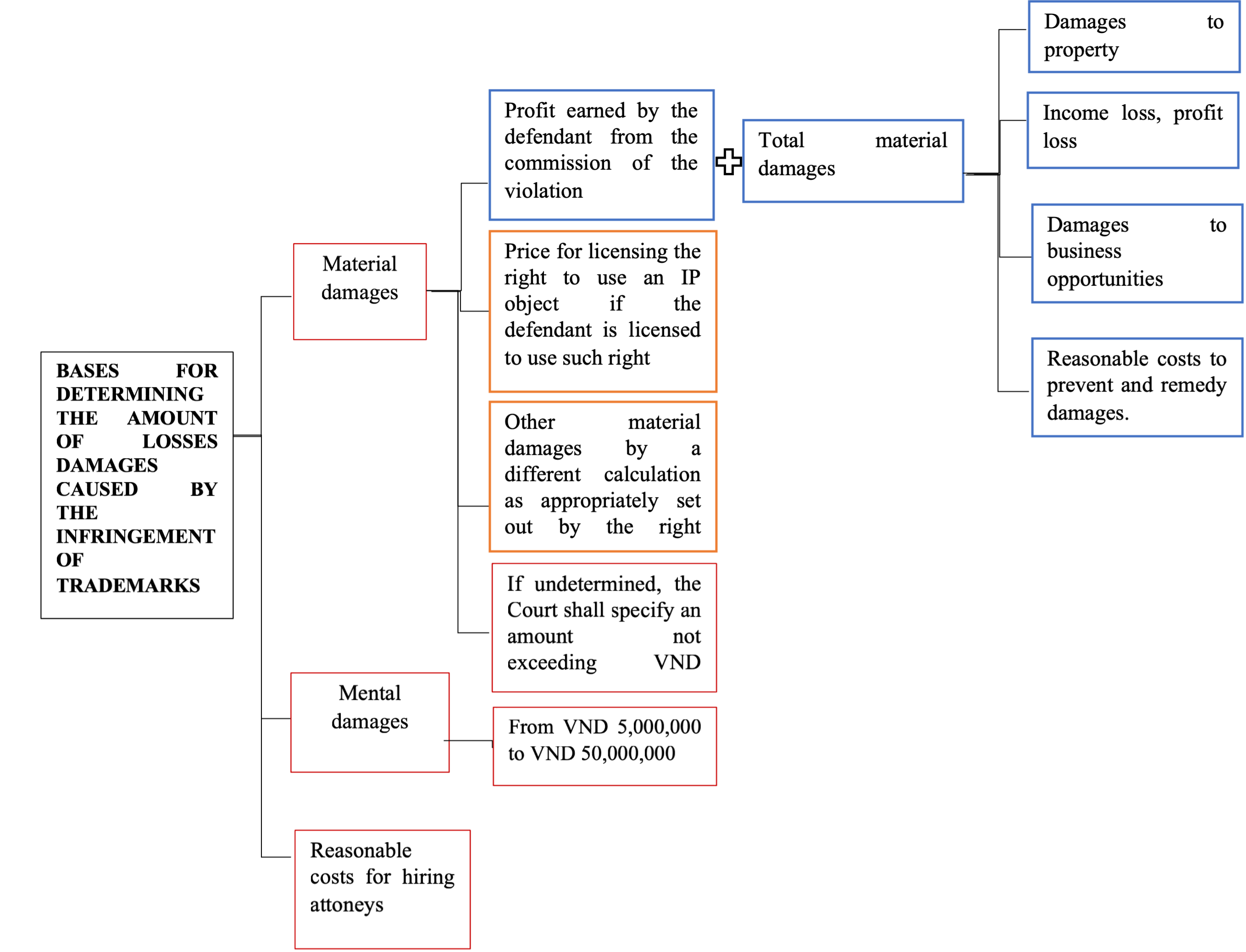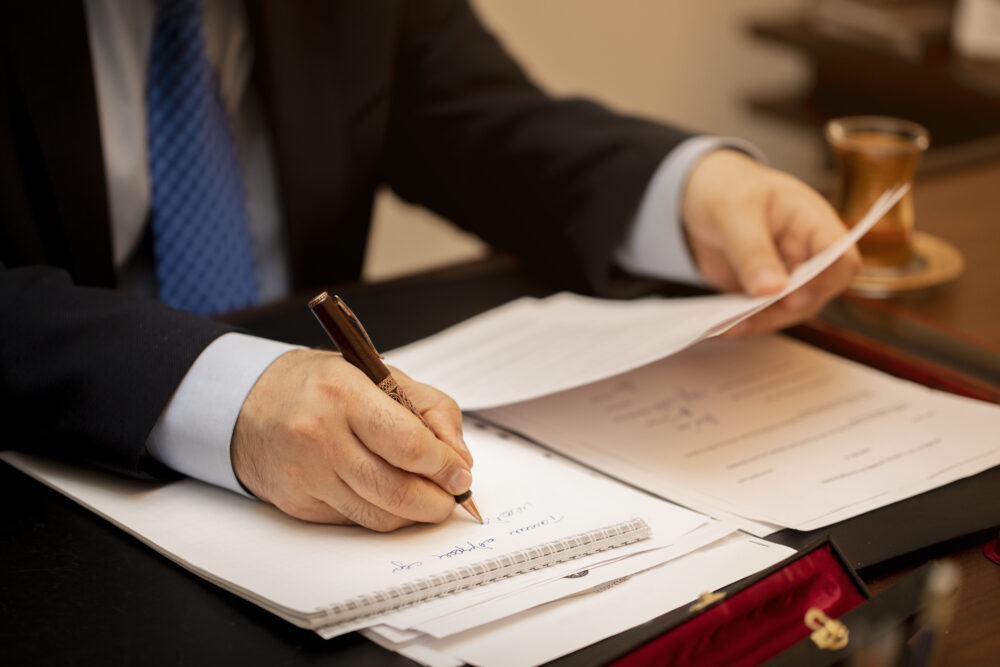Civil remedies are one of the most important remedies to implement intellectual property rights (“IP rights”). Compensation for damages is considered the most effective way not only to discipline the act of violating trademarks but also to ensure the rights of the injured parties. Different from the non-provision for a method to determine the number of damages of the Civil Code (the number of damages is the monetary value of the actual damage), the Law on Intellectual Property 2005 gives clear guidance on the bases for determining the number of damages inflicted by the violation of IP rights.
(i) Bases for determining the number of losses and damages caused by an infringement of the IP rights

(ii) Some notes to keep in mind when calculating the number of damages
See more: Some notable measures to handle intellectual property disputes.
Firstly, the damages caused by the infringement of IP rights must be the actual material or mental damages resulting directly from the act of violation. As a trademark is essentially one of the signs to identify or distinguish one product or service from another product or service in the same sector, material damages caused by the infringement of trademarks are damages directly affecting the business activities and use of the trademark which will lead to revenue or profit loss as well as other material damages on the part of the trademark’s owner. The compensation for such damages shall be based on the actual damages. Damage will be deemed actual damage when sufficiently satisfying the following three (03) requirements:
- The material or mental damage is real and suffered by the injured party.
- The injured party is capable of attaining the material or mental benefit.
- There is a decrease or loss of benefit of the injured party after the act of violation took place compared with the capability of attaining such benefit in the absence of the act of violation and the act of violation is the direct cause of the decrease or loss of benefit
Secondly, if the decreased profit of the plaintiff is not yet calculated into the total material damages, the profit gained by the defendant from conducting the violation of the IP rights will be applied to the bases for determining the material damages. Accordingly, the Law on Intellectual Property has unified the profit gained by the defendant from violating the trademark and the decreased profit suffered by the plaintiff. Theoretically, this regulation is not entirely appropriate, however, in practice, the determination of damages from violating trademarks is only relative so that the replacement is still acceptable and adopted by many jurisdictions around the world.
Thirdly, if the trademark’s owner can prove that the violation of the trademark has caused material damages to him/herself, the trademark’s owner aka the plaintiff in the dispute of IP rights can only choose one of the above bases for determining the number of damages.
Fourthly, unlike other disputes, with regard to disputes about the violation of IP rights, attorney costs are considered one of the bases for determining the number of damages resulting from trademark violations.
Bringing a lawsuit in the protection of IP rights in general and trademark rights, in particular, is the current trend to optimize the benefits of the intellectual property objects’ owners. With intellectual property being an intangible asset, the determination of damages caused by infringement still faces various challenges in trial practice. However, compensation for damages is still one of the most effective institutions for protecting IP rights.
Disclaimer: This article is for general information only and is not a substitute for legal advice. Apolat Legal is a Vietnamese law firm with experience and capacity to advise on matters related to Intellectual Property Rights and Dispute Resolution. Please click here to learn more about our services and contact our lawyers in Vietnam for advice via email info@apolatlegal.com.





































